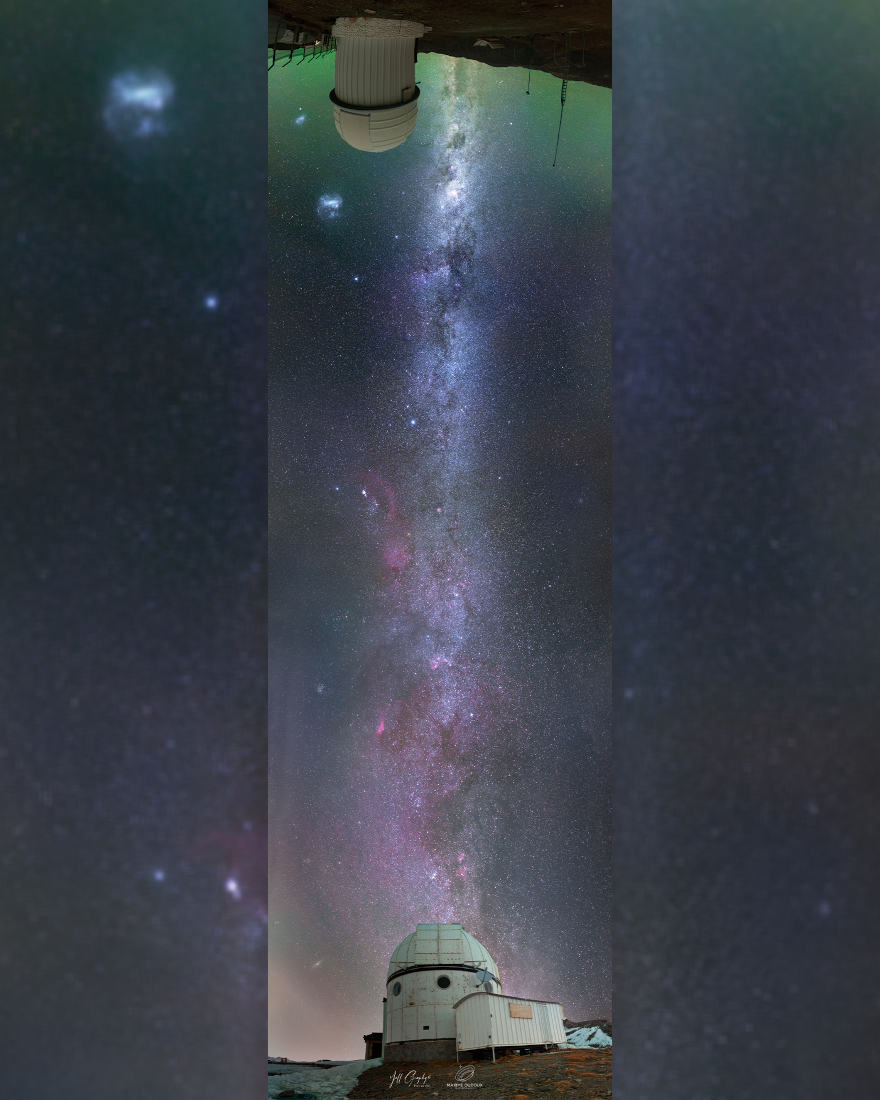2022年6月3日
A 10,000 Kilometer Galactic Bridge
Image Credit & Copyright: Maxime Oudoux, Jean-Francois GELY
Explanation: With this creative astro-collaboration you can follow the plane of our Milky Way Galaxy as it bridges northern and southern hemisphere skies. To construct the expansive composite nightscape, skies over Observatorio El Sauce in Chile (top) were imaged on the same date but 6 hours later than the skies over the Saint-Veran observatory in the French Alps. The 6 hour time-lag allowed Earth’s rotation to align the Milky Way above domes at the two sites. All exposures were made with similar cameras and lenses mounted on simple tripods. A faint greenish airglow is visible in the dark Chilean sky that also features the Large and Small Magellanic Clouds near the observatory dome. In the French Alps light pollution is apparent, but the distant Andromeda Galaxy can still be spotted near the horizon in the northern night. On planet Earth the two observatories are separated by about 10,000 kilometers.
Tomorrow’s picture: light-weekend
10,000公里长的银河桥
影像提供与版权: Maxime Oudoux, Jean-Francois GELY
说明: 借由这种创造性的天文合作,你可以纵目横跨南北半球天空的银河系盘面。为了建构此广袤的夜空组合景观,得在同一天拍下智利柳树天文台(上)和法国阿尔卑斯山圣维朗天文台天文台上方的天空,只不过智利影像拍摄的时间点要稍晚6小时。有了这6小时的延迟,地球的自转得以把此二地点望远镜圆顶上空的银河对齐。此外,所有的影像都是用架在简单三脚架上的类似相机和镜头所记录。在智利幽暗的天空中,可以看到淡淡的泛绿气辉,而大麦哲伦星系和小麦哲伦星系则出现在天文台圆顶附近。法国阿尔卑斯山天空的光污染很明显,然而在地平线附近,仍可见到悬在北半球夜空中的遥远仙女座星系。在地球表面上,这两座天文台相距约10,000公里。
明日的图片: light-weekend



